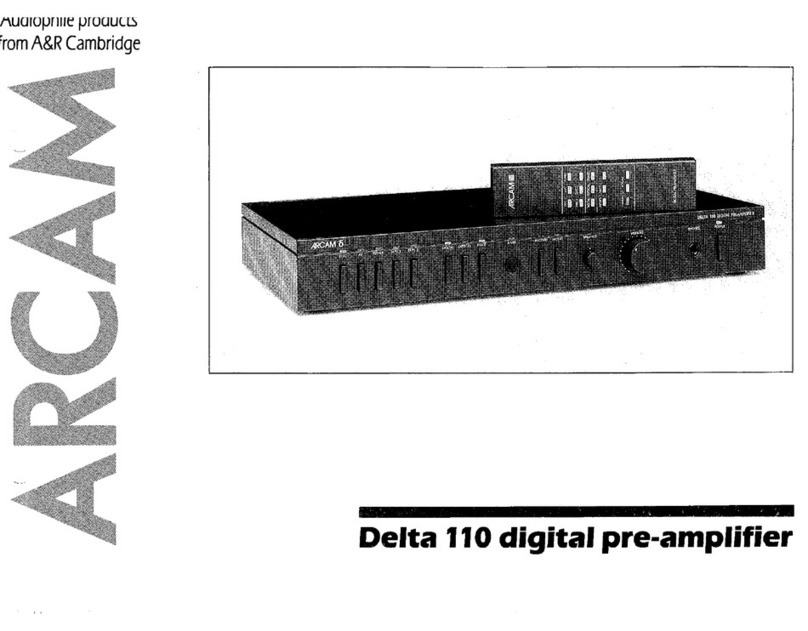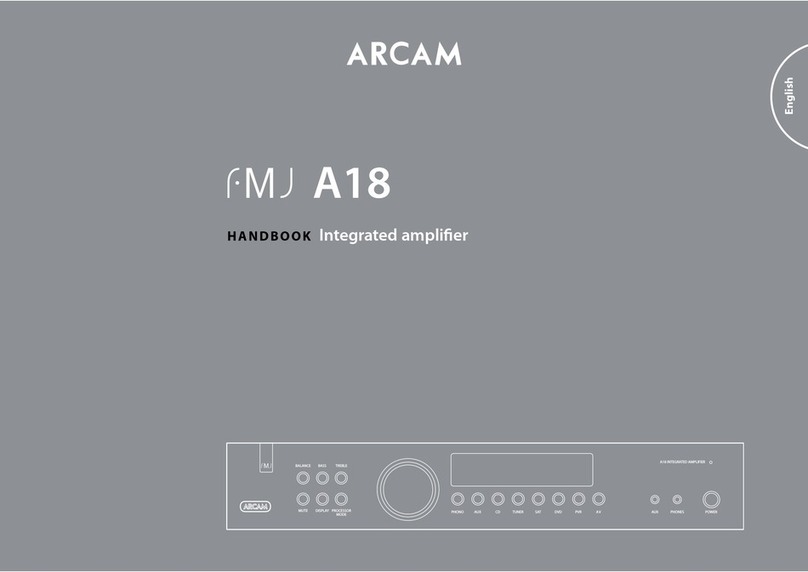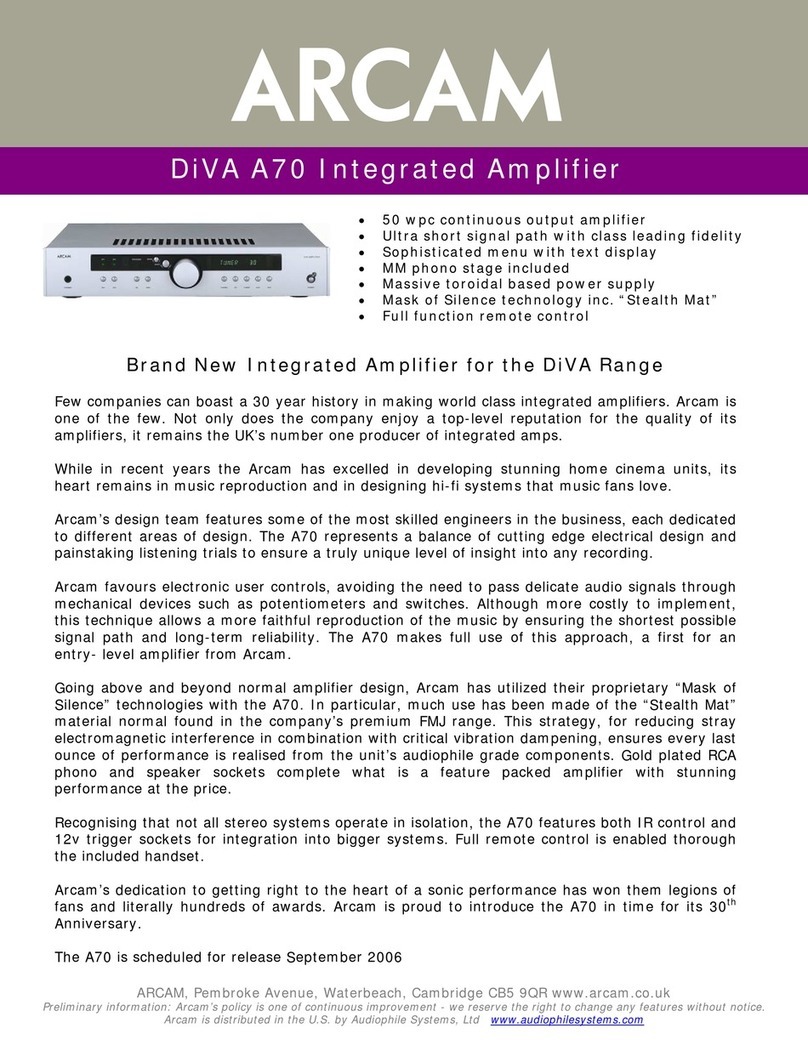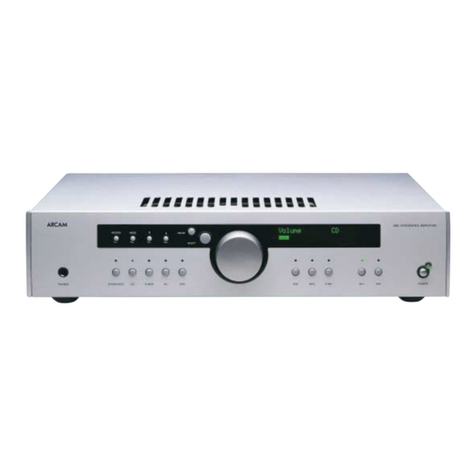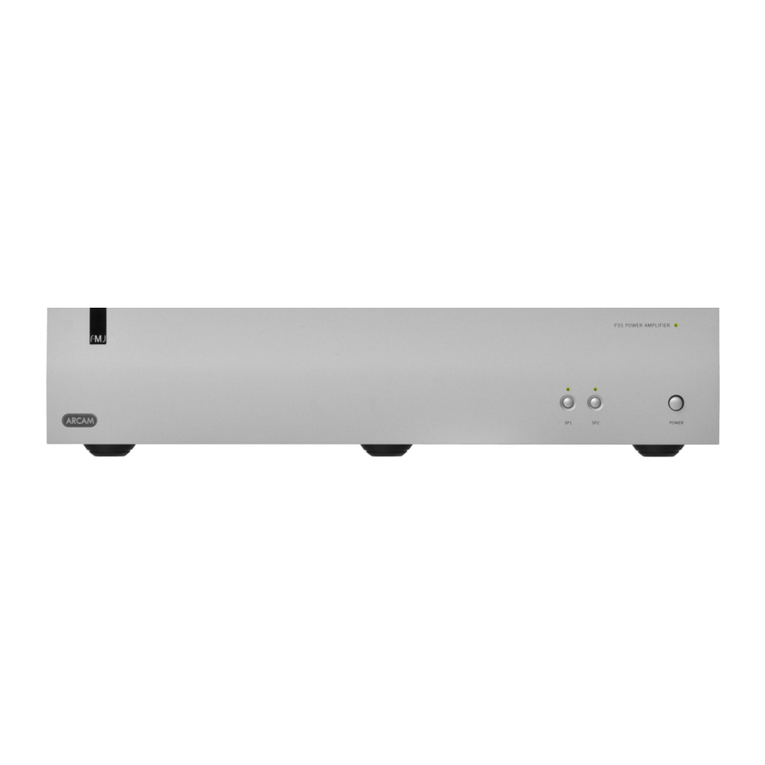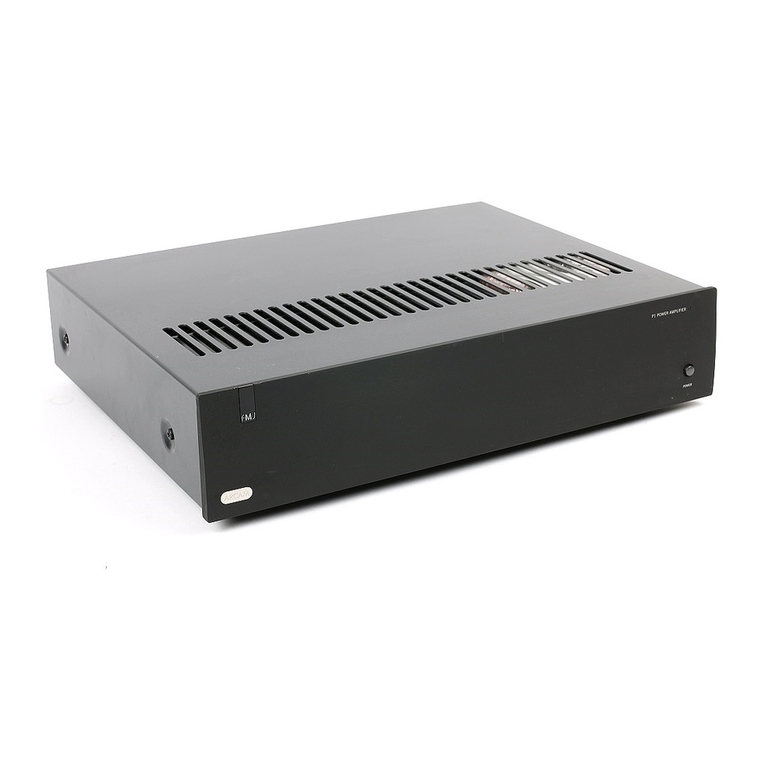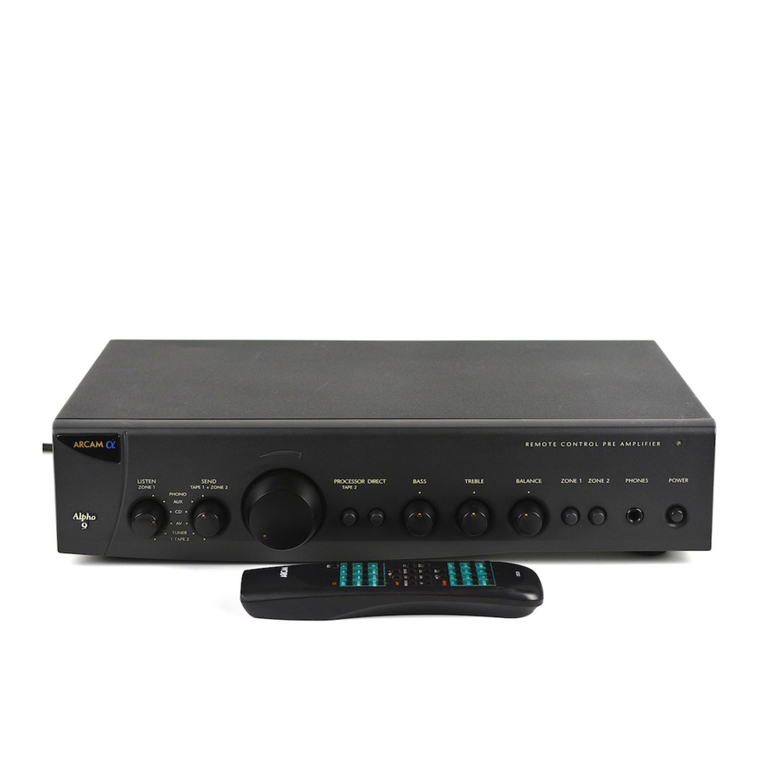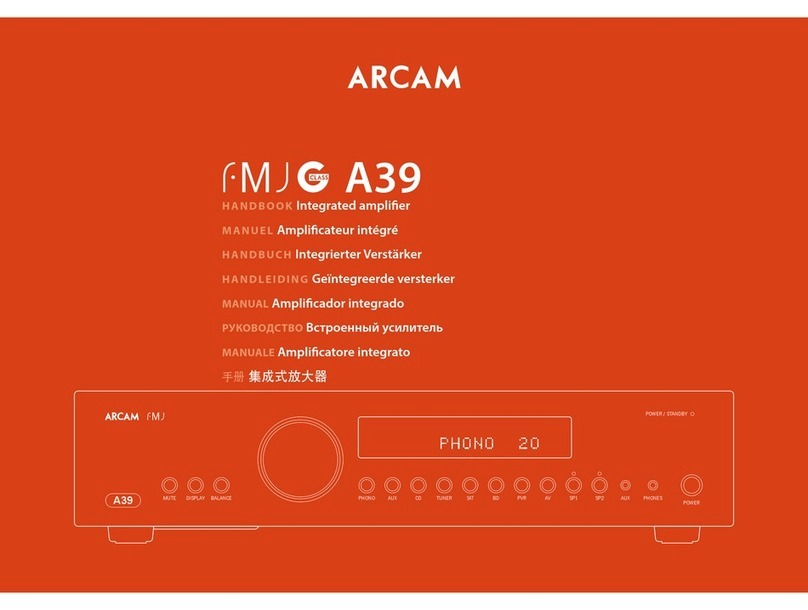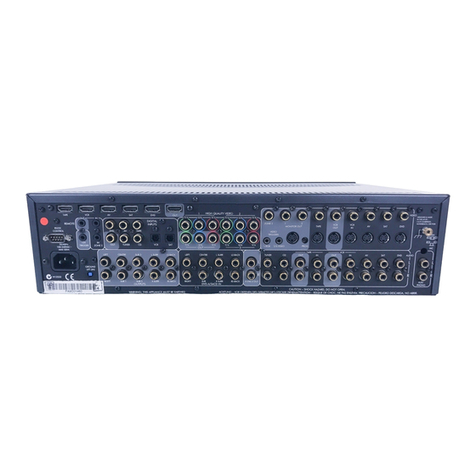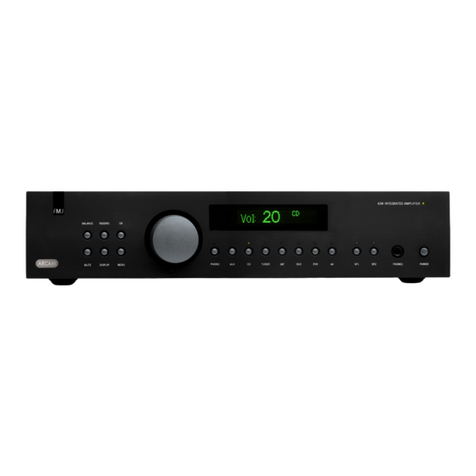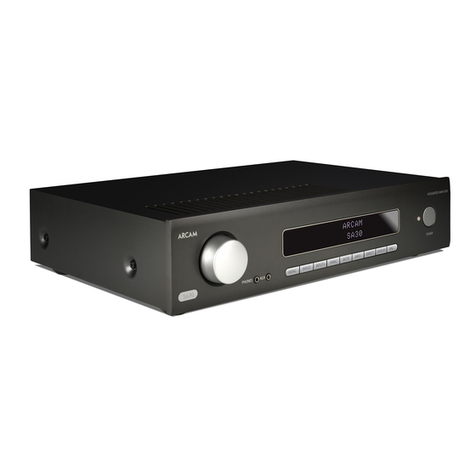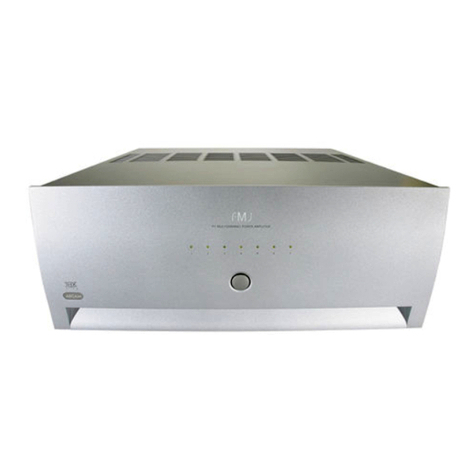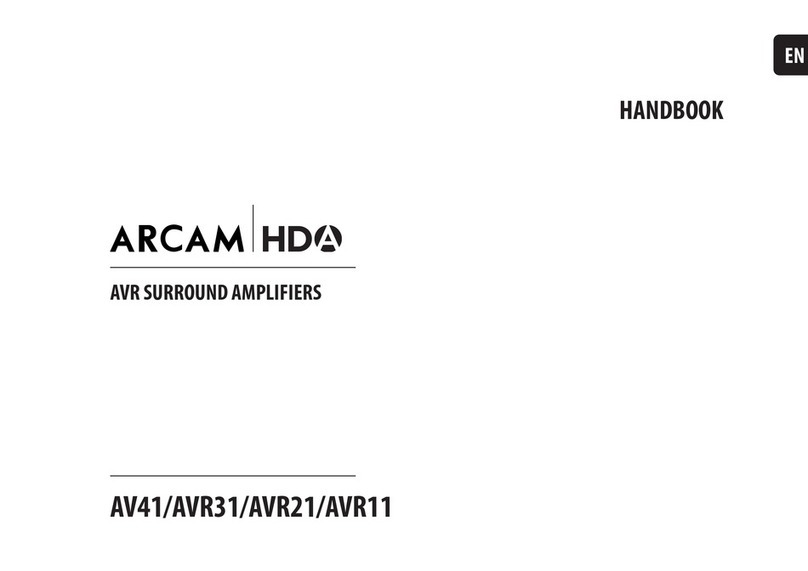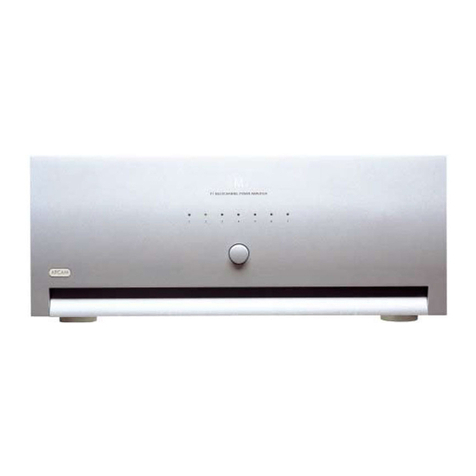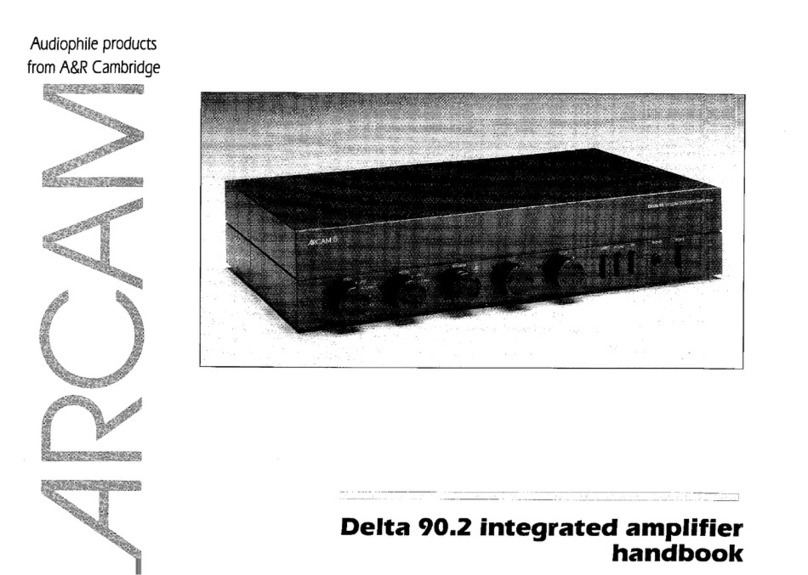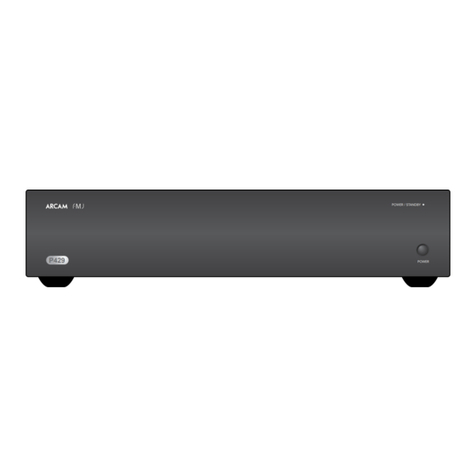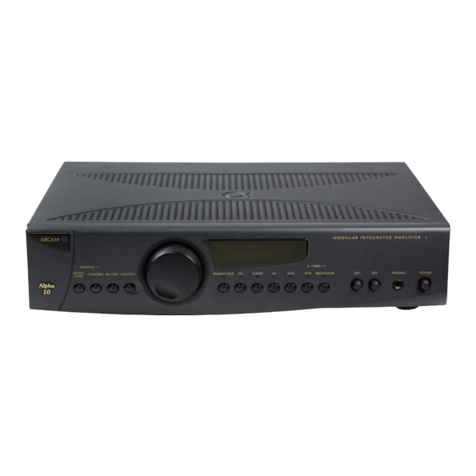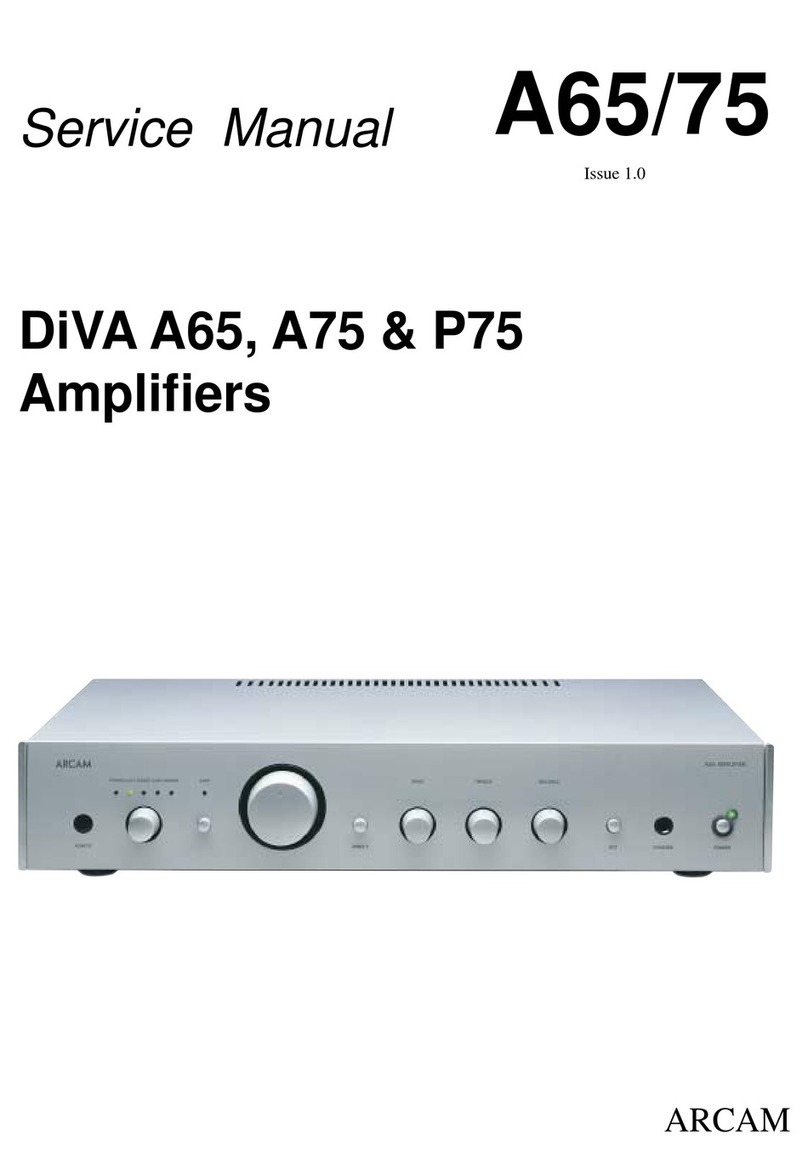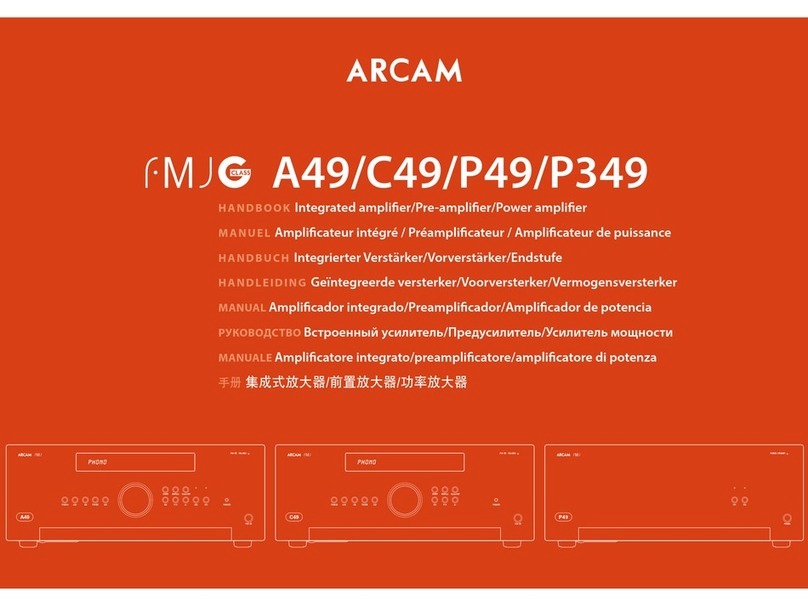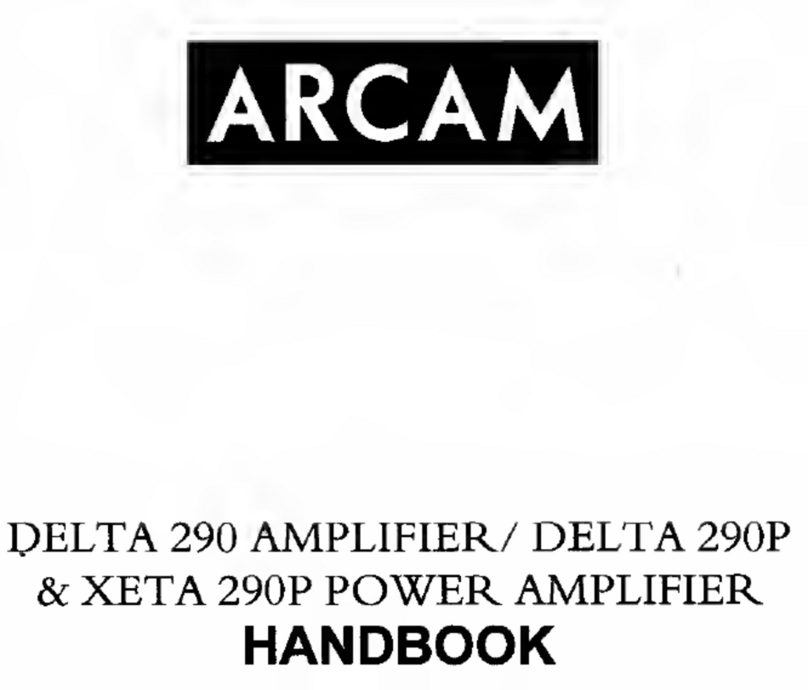
The Protection is live at all times that even in standby
due to the fact that all chips related with these
functions are driven from the 4.8(D) supply rails.
As we can see from Fig 4 we can isolate the left and
right channel protection lines for both over current and
D.C offset by looking at the protection lines before they
are mixed into single fault status lines for the micro at
location IC600 this will allow us to identify the channel
that is “flagging the fault”.
Both versions of the Amplifier have the ability to warn
the user and/or engineer of a internal fault, the A80 will
use both the Power LED and front panel display, the
P80 has no display and as such uses the sequence of
LED flash codes listed below in Fig 7.
Fig 6. A80 fault alert information.
Power LED status Fault indicated
LED red during start up DC offset fault
Led red during normal use Fault as shown on display
Fig 7. P80 fault alert information.
Power LED status Fault indicated
LED flashing green DC offset (left or right)
Flashing red Short circuit fault (over current)
Flash amber Thermal fault (heatsink L or R)
Red on flash green Multiple protection lines triggered
The Micro has direct control over all internal relays for
protection and output control, the speaker relay control
lines can be seen on the diagram as SPKR1 for SP1
and the SPKR2 for SP2 outputs, these lines switch
High to engage the relay.
The A80 pre-amp relay should disengage when
switching inputs to prevent any chip switching noise
from leaving the pre-amp stage the control line can be
seen on R385 and switches High to engage the relay.
Signal Detect and Delayed off – P80 only.
Signal detection is achieved by amplifying the signal
present at the power amp inputs by a large amount
using two channels of a quad op-amp at location
IC700 A/B the outputs of this op-amp are summed by
a non-inverting comparator formed using the two
remaining op-amp channels these will produce a active
High reset pulse at the output pin 14.
When mains is plugged into the P80, the master
*Reset line goes low and the 0.38Hz clock starts
ticking. The *Reset pulse resets the latch effecting a
HIGH *Q output and thus a LOW circuit output. When
the signal detect Latch and Counter Reset go HIGH
(an input is detected), the *SD latch input is driven
LOW by the inverter and *Q goes LOW the circuit
output then goes high switching the Amplifier on.
If the Amplifier does not see audio on it’s Power amp
inputs for either 12 or 45 minutes (this can be user
configured by moving the jumper at position CON702) the
Amplifier will auto switch into standby.
Jumper settings.
If you want to turn the A80 into a separate Pre-Power amp
(make the Line out become a Pre-amp out and make the
pre-out become a power amp in) adjust the setting of the
following links.
Remove the jumpers from Con 302 and Con 305 (this
disconnects the pre-amp output from the power amp input)
Fit jumpers on pins 2 & 3 of Con 304 & Con 305
(disconnects the line output buffer from the line out
sockets and connects the pre out sockets to the line out
sockets)
You can change the Phono input of the A80 into a AUX2
input by fitting jumpers on pins 2 & 3 of Con 306 an Con
307 this routes the signal directly from the Phono inputs
into a separate set of inputs on the pre-amp switches
IC302 and IC303.
We need to enable the AUX2 input by pressing AV,TAPE
and PHONO now use the rotary encoder to change the
selection, press confirm to select the new setting.
Con 400 and Con 500 are for the Bias setting and should
not be altered, if in doubt you should not measure more
than 22mV across Con 401 and Con 501 when the
amplifier is idle and this should be adjustable using RV400
and RV500 (L&R channels).
Con 601 and Con 602 are for re-programming (move the
jumper from Con 601 to Con 602 when reprogramming
otherwise the jumper should be on Con 601).
Con 700 and Con 701 are used to set the P80 signal
detect sensitivity as default the link is fitted giving a input
sensitivity of roughly ~500uV if the jumpers are removed
the sensitivity decreases roughly x4 to 2mV this setting
can be used for operation with noisy source equipment.
Con 702 is used to set the time coefficient of the auto
power off delay, the default pins are 1 & 2 this gives a
delay of 12 minutes until the amp powers down under a no
signal period, if we place the jumpers on pin 2 & 3 this
time increases to 45 minutes +/- 20%.
Fig 8. Jumper settings.
Jumper A80 P80
Con 300, Con 301 Not fitted Fitted
Con 302, Con303 Fit (NF for pre/pwr) Not fitted
Con 304, Con 305 1&2 (2&3 for
pre/pwr)
Not fitted
Con 306, Con 307 1&2Phono;(2&3
Aux2)
Not fitted
Con 400,Con 500 Factory set Factory set
Con 601 Fit (NF to program) Not fitted
Con 602 Fit (NF to program) Not fitted
Con 700, Con 701 Not fitted Fit (0.5mv), NF (2mV)
Con 702 Not fitted 1&2 (12 mins; 2&3
45mins).
